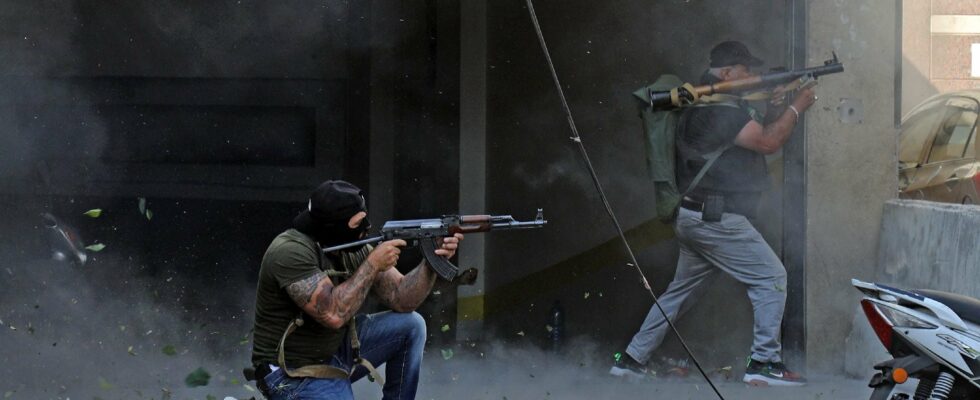It is one of the most powerful non-state actors in the Middle East, and the only Lebanese group to have retained its weapons after the end of the civil war in 1990. Hezbollah, a terrorist organization recognized by many countries, has once again become a target for Israeli forces in recent days, after rocket attacks on the Golan Heights killed 12 people on July 27. The equipment used – Iranian Falaq rockets – is far from representing the entire vast arsenal at Hezbollah’s disposal: according to estimates, the militia has between 130,000 and 150,000 rockets and missiles, more than four times more than its ally Hamas is said to have stockpiled before the Gaza war. Much of what is publicly known comes from statements by the group and its leader, Hassan Nasrallah, who claims that his fighters have used only “a portion” of their weapons in the escalation of attacks against northern Israel since October 7. L’Express takes stock.
A large quantity of missiles and rockets
Hezbollah has used a variety of short-range missiles and rockets, initially targeting tanks and other technical equipment near the border, before moving on to attacks on military barracks and bases. On November 11, Nasrallah revealed that Hezbollah was using the Burkan model, a munition that can be easily assembled and cause massive destruction up to 150 meters from the point of impact. This is the weapon of choice during the Syrian civil war, where Hezbollah has deployed some of its 100,000 fighters – figures that may be inflated – to support President Bashar al-Assad.
Nasrallah also revealed in November that the group was using Katyusha rockets. Originally made by the Soviet Union and copied by Iran, they can travel 20 to 40 kilometers and are fired in series. Although they are unguided, Fabien Hinz, a defense analyst at the International Institute for Strategic Studies, says Hezbollah “can get a lot out of them because they are cheap and up to a certain range they work,” the Washington Post.
Another, more dangerous model: larger guided ballistic missiles, such as the Fateh 10, whose range of up to 300 kilometers could put Tel Aviv and even Jerusalem in its sights. In 2022, Nasrallah also mentioned precision-guided munitions, but the group has never tested them or presented them in public.
A varied fleet of drones
For several months, Hezbollah has been using drones extensively to attack Israeli military positions, usually near the border. According to official statements, the group began using the explosive-laden flying devices on November 2, in an attack on an Israeli army post in the Golan Heights, injuring two people. In mid-May, after Israeli forces invaded Rafah in southern Gaza, the militia launched a more advanced version that can fire two rockets and explode on impact.
Although Iran is Hezbollah’s main arms supplier, the group has become more self-reliant in recent years. “Today in Lebanon, and for a long time, we have started to manufacture drones,” Nasrallah said in 2022, a claim he reiterated in June. Hezbollah has also used commercial drones for reconnaissance and to test gaps in Israel’s air defenses, such as in late June in Haifa, where one craft flew undetected over the city for hours, recording images of strategic sites. Hezbollah has not confirmed the model.
Strong anti-aircraft defenses
In addition to its offensive capabilities, Hezbollah also benefits from a robust anti-aircraft shield. On several occasions, it has used surface-to-air munitions, including the Iranian 358 anti-aircraft missile, to shoot down Israeli drones. The group also claims to have used more sophisticated munitions—likely the Iranian Sayyad-2C missile—a radar-guided device that can hit targets at nearly 90,000 feet, forcing Israeli fighter jets to retreat.
